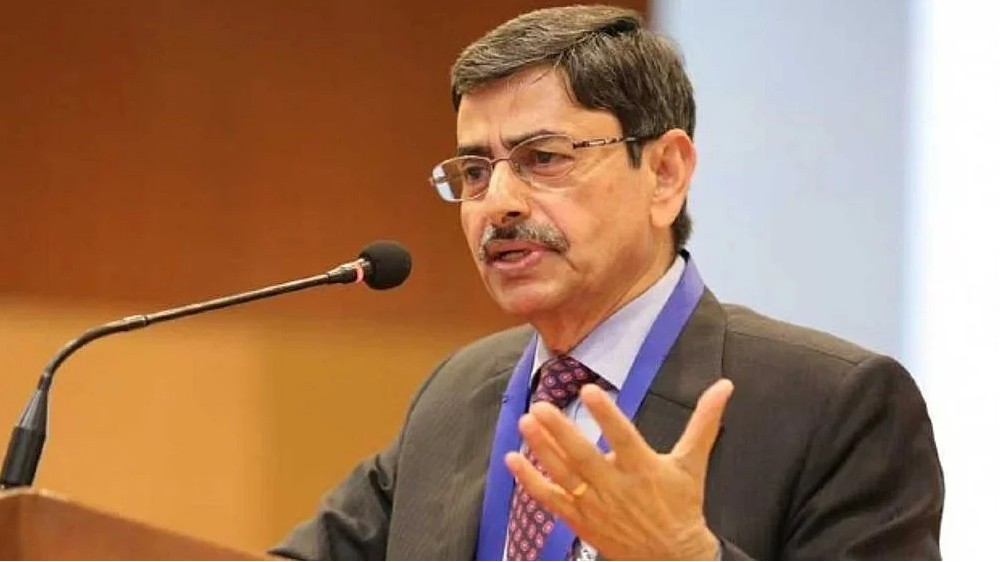Kasi–Tamilagam, an ageless bond
Rishis, Siddhars, Yogis, Poets and Social reformers have shaped this evolution. Kings of the yore liberally patronised it as their duty.

CHENNAI: The Constitution of India introduces our country by name Bharat, the name by which she has been known since the beginning of our history. This is how ancient Indian literatures refer to her. This is how she is invoked in traditional day-to-day rites and rituals. Bharat, as the Mother, was the rallying point for the National Freedom Movement. The western notion of a state created by a sovereign ruler, often by force, fails to comprehend Bharat which has been a civilizational evolution catalysed and organically shaped by a shared cultural spirituality.
Rishis, Siddhars, Yogis, Poets and Social reformers have shaped this evolution. Kings of the yore liberally patronised it as their duty.
In the long evolutionary journey of Bharat, Tamilagam (the land of Tamil speaking people) has played a crucial role. It is here that the physical manifestation of Bharat, north of the ocean begins. Several thousand people travelled every year both ways between Kasi and Rameswaram until the British dismantled the unbroken chain of centuries old infrastructure in-between for their rest and recuperation.
The letter of January 20, 1801 of Sarfojee Maharaj, the last ruler of Tanjore to the British resident, Benjamin Torin who had taken over the control, pleading for not disturbing or dismantling the chain of Chattrams (Dharmashalas) between Kasi and Rameswaram where several thousand pilgrims, travellers and traders were provided three free meals a day and medical care bears a heart wrenching testimony to it.
Kasi has had such a deep influence over Tamilagam that her Kings patronised Kasi so much so that when it came under severe existential threats during invasions from Central Asia and the near West they built a large number of Kasi Viswanatha temples in various parts of Tamilagam. Parakrama Pandya, a Pandya king even built a replica of Kasi called Tenkasi (Kasi of the South). Villages in Tamilagam have Kasi-Viswanatha Temples.
Fifteenth century great saint Mahapurush Sankardev of Kamrup (Assam) studied at Rameswaram and Kanchi and later came to Kasi for further studies. After studying at these places, he returned to Assam, established a chain of Vaishnavaite monasteries called Shattra in the Brahmaputra valley and composed a beautiful poem in praise of Bharat - “Dhanya Dhanya Bharat Bhoomi.”
In the 17th century, Swamy Kumaragurupara Desikar of Dharmapuram Adheenam, a great Saivaite institution in the present day Mayiladuthurai district of Tamil Nadu came to Kasi and built the Lord Kedareeshwar Temple at the Kedar Ghat on the banks of Ganga. Later his disciples built a Kasi Viswanatha Temple at Thirupanandal near Kumbakonam in Thanjavur district on the bank of Cauvery, another holy river of Bharat. Kodaganallur Sundarar Swamigal, the Guru of Dr Sundara Perumal Pillai popularly known as Manonmaniam Sundaranar, the author of Tamil Thai Vaazhthu, the State song of Tamil Nadu, spent a good part of his life at Manikarnika Ghat in Kasi. Kasi had a deep influence on Manonmaniam Sundaranar, who is believed to have taught Saiva Siddhanta to Swami Vivekananda.
In the late 19th and early 20th century, Mahakavi Subramania Bharathi, the revolutionary poet of the National Freedom Movement and an ardent devotee of Bharat Mata came to Kasi for studies. He was so deeply influenced by the intellectual and spiritual serenity and vibrancy of the place that he paid an emotional tribute to Kasi with a beautiful poem. Mahakavi’s grand-nephew and their family even today live in Kasi near Hanuman Ghat. In fact, Kasi is home to a number of Tamil families.
Kasi and Kanchi were also two great centres of astronomical studies and researches.
There are evidences of the two institutions regularly sharing their knowledge. British astronomers, including Barker, Pearse, Campbell and John Playfair who visited observatories at Kasi and Kanchi for research between 1770 and 1780 have expressed their amazement at the mathematical genius and astronomical findings at these places.
Kasi and Kanchi had a long connect also through trade in their unique silk products - the World famous Kancheevaram and Banarasi sarees. Evidence abounds showing multi-faceted deep almost umbilical relation between Kasi and Tamilagam. A rich history, destroyed during colonial rule, is waiting to be re-discovered.
Even though the physical infrastructure of the connect between the two were dismantled during colonial rule, the emotional bonds remained alive in the hearts and minds of the people. Under the bold and visionary leadership of Prime Minister Narendra Modi who has a deep and intimate understanding of Bharat, this is being rejuvenated. His abiding love for Tamil language and setting up of Subramania Bharati Chair in the Banaras Hindu University for its promotion and propagation as well as imaginatively inspiring patronage to the forthcoming Kashi-Tamil Sangamam, a month-long festival from mid-November for celebrating the age-old connect between the two are testimonies to his deep commitment to ‘Ek Bharat - Shreshtha Bharat’ (Ore Bharatham, Unnatha Bharatham).
RN Ravi Governor
Visit news.dtnext.in to explore our interactive epaper!
Download the DT Next app for more exciting features!
Click here for iOS
Click here for Android



